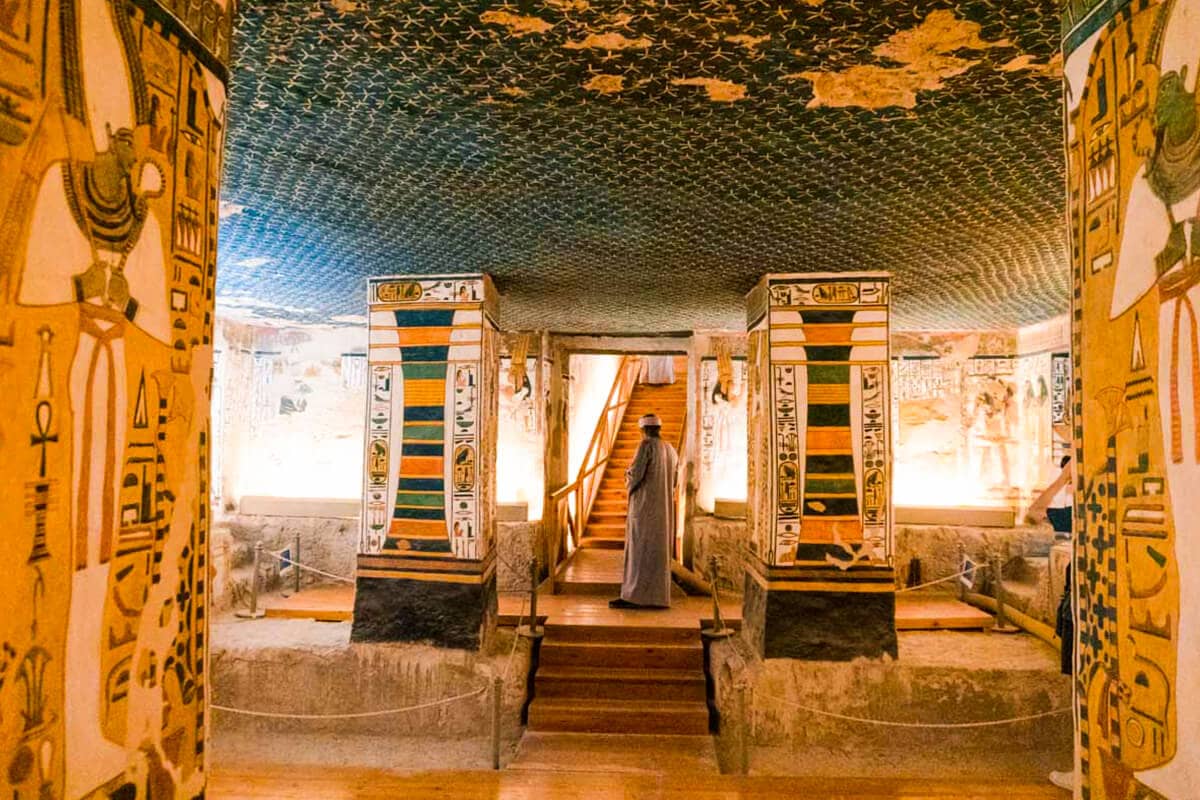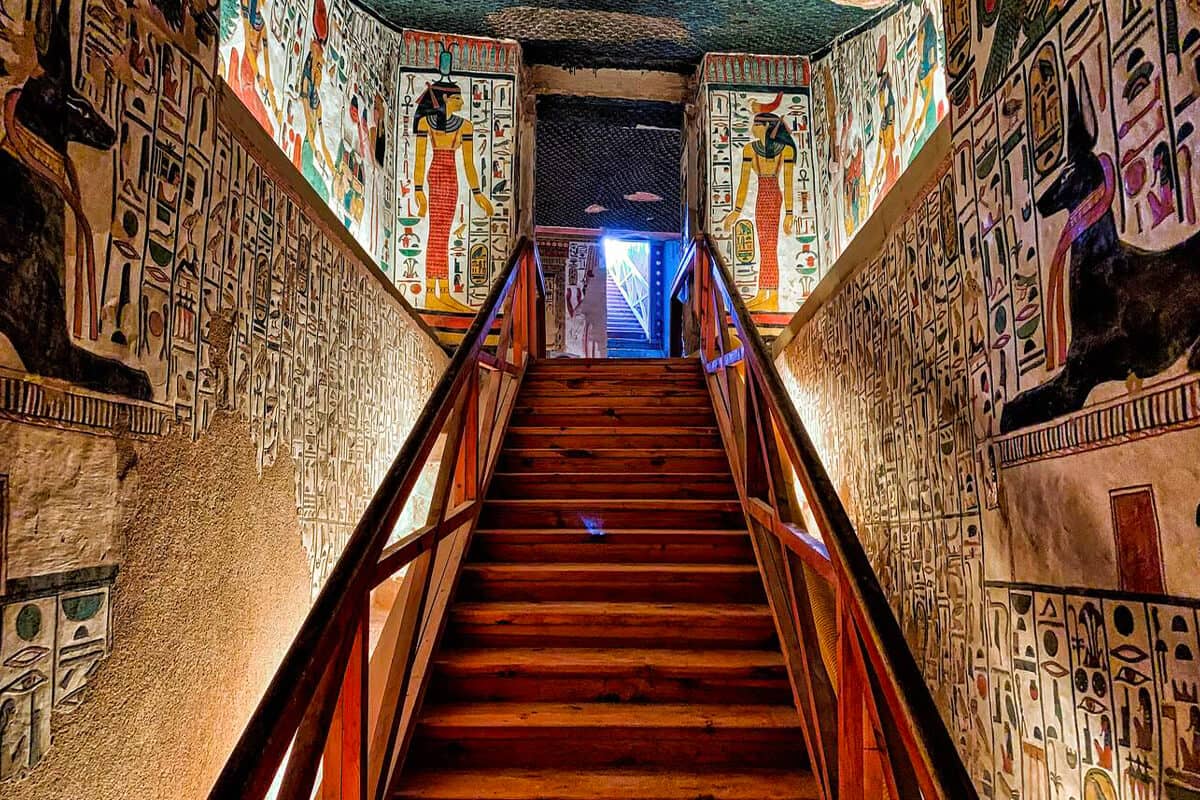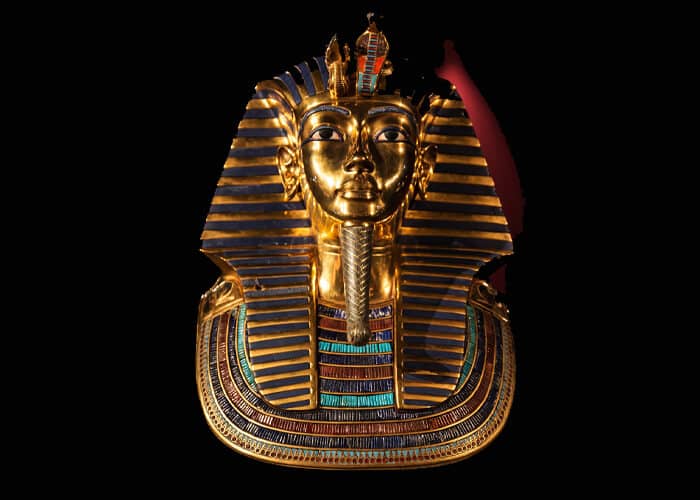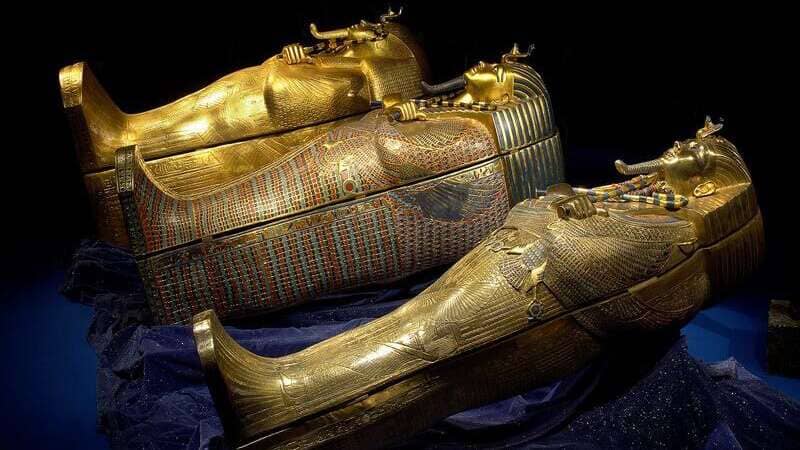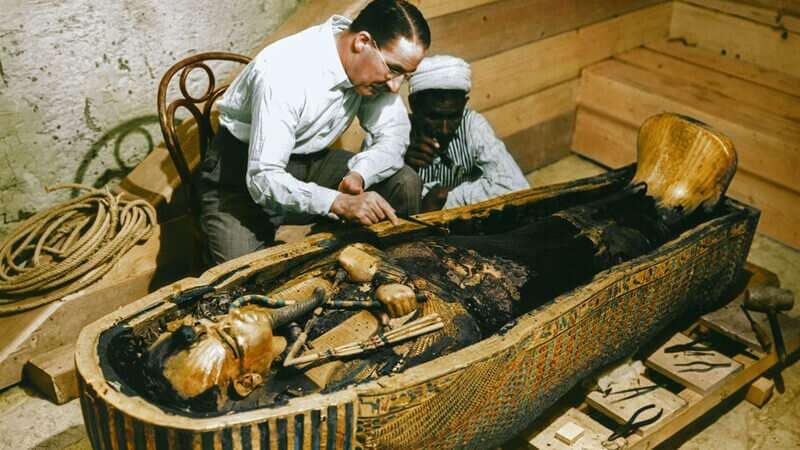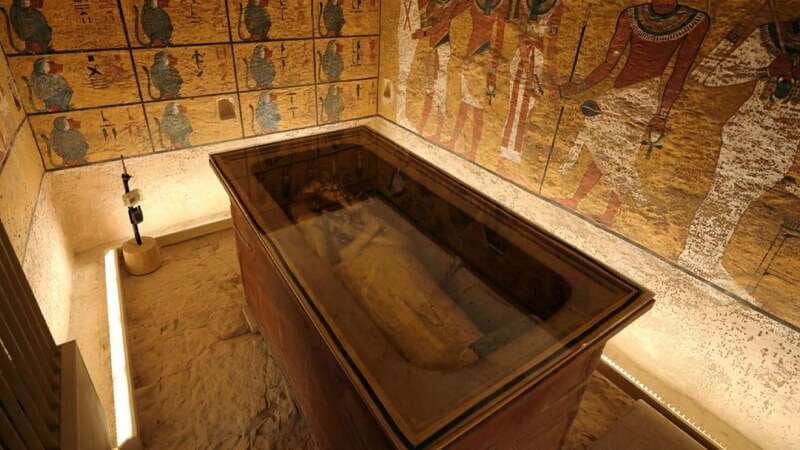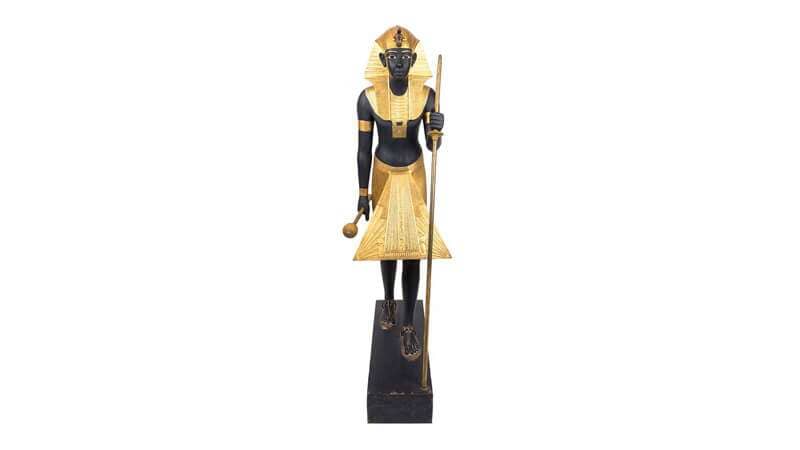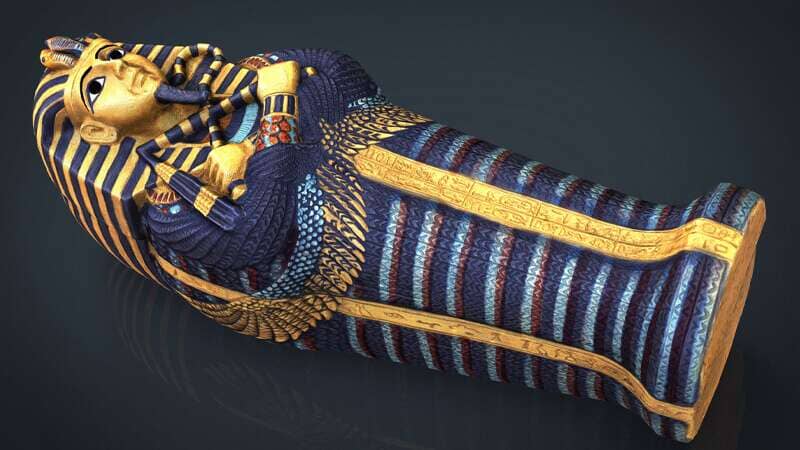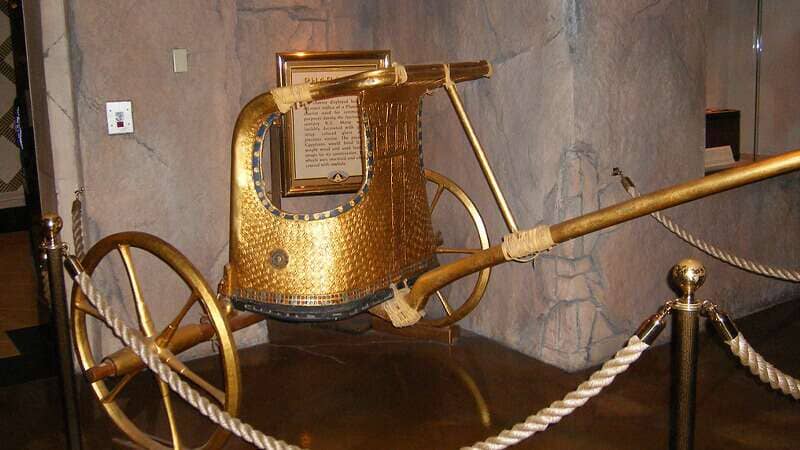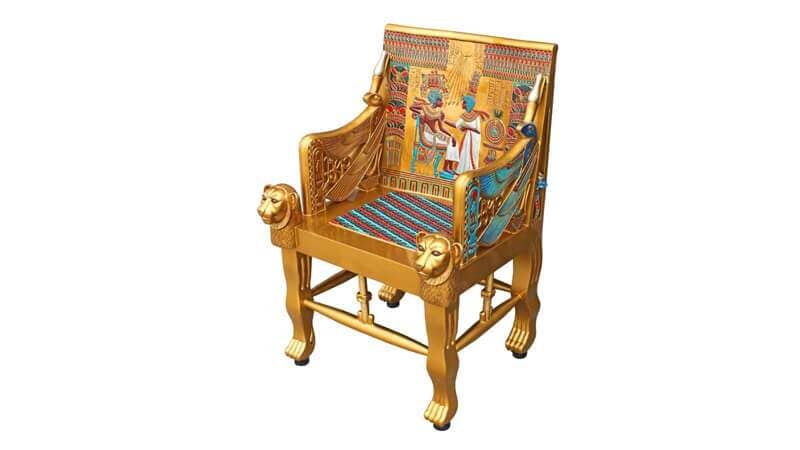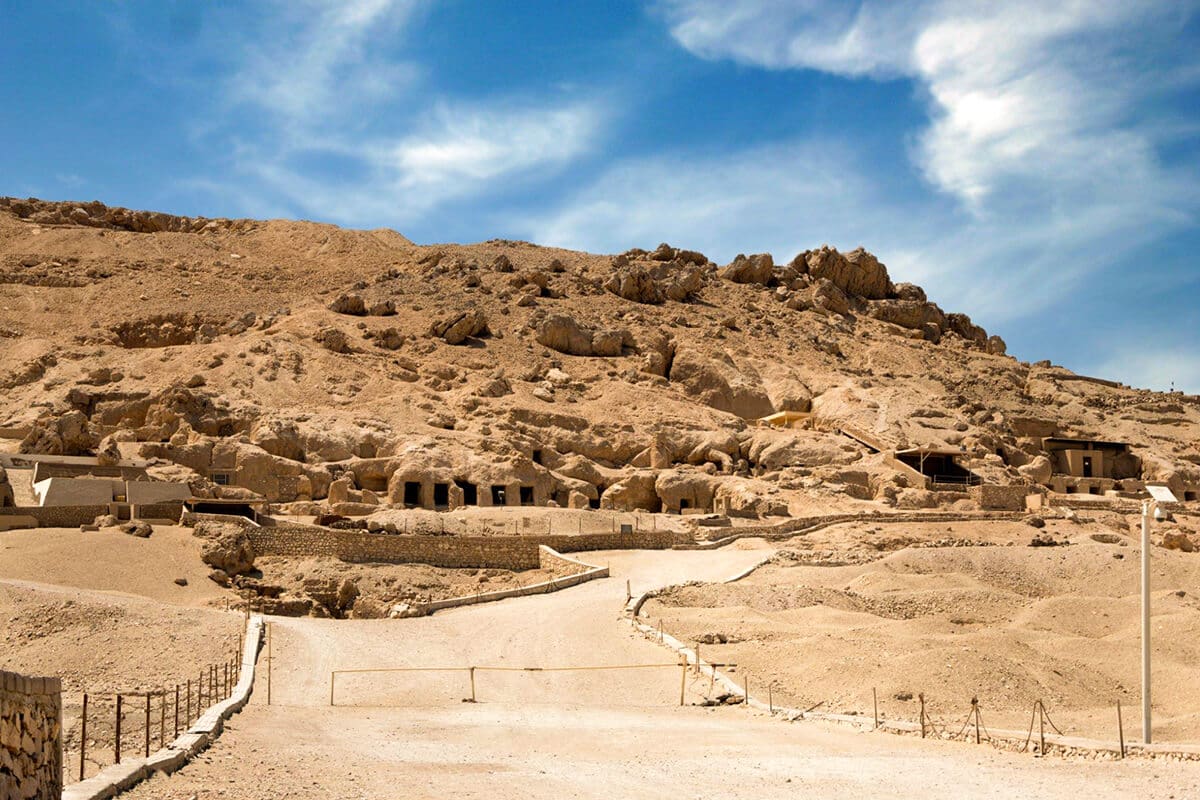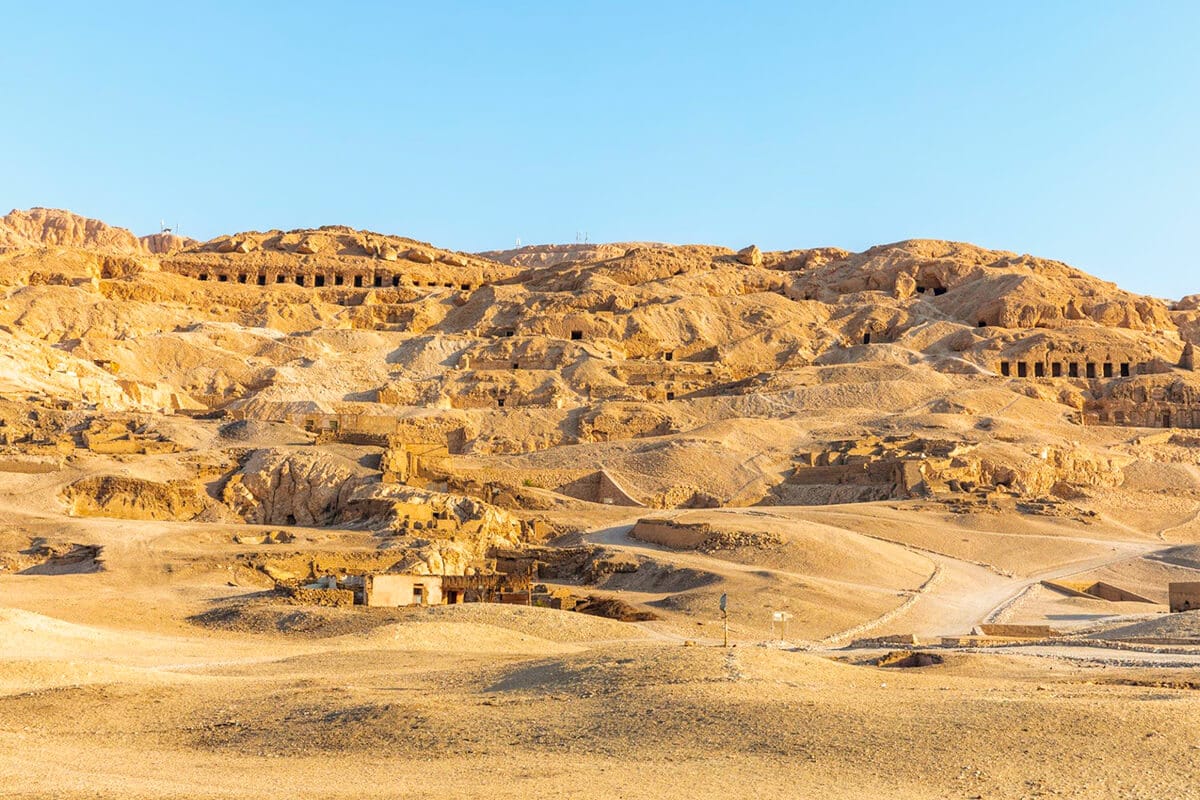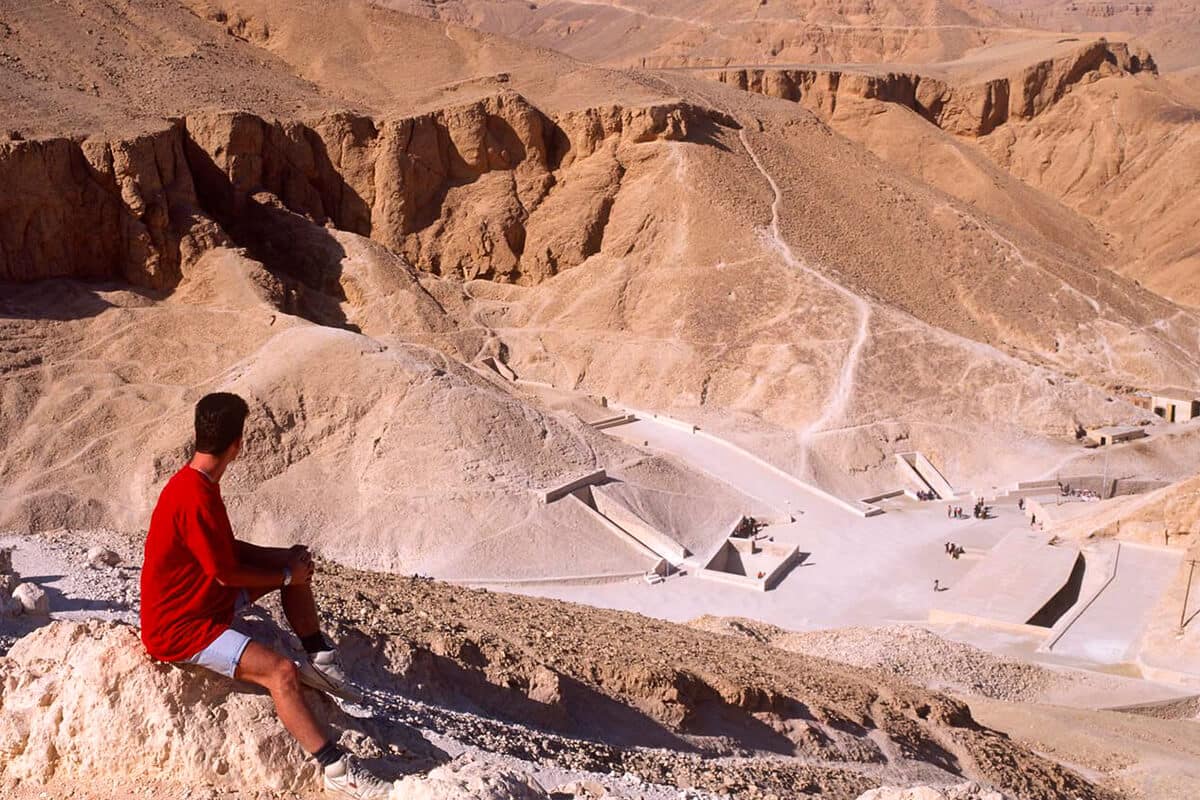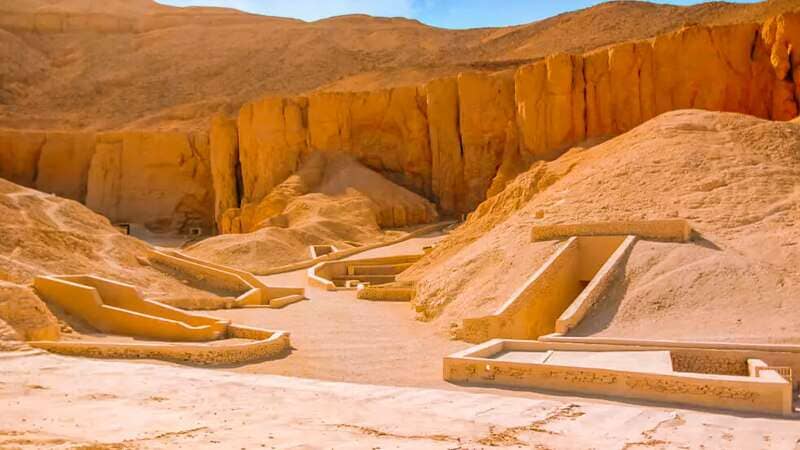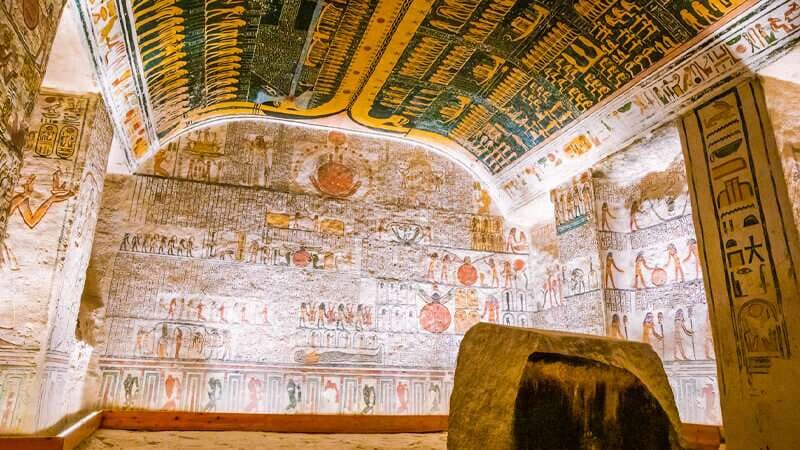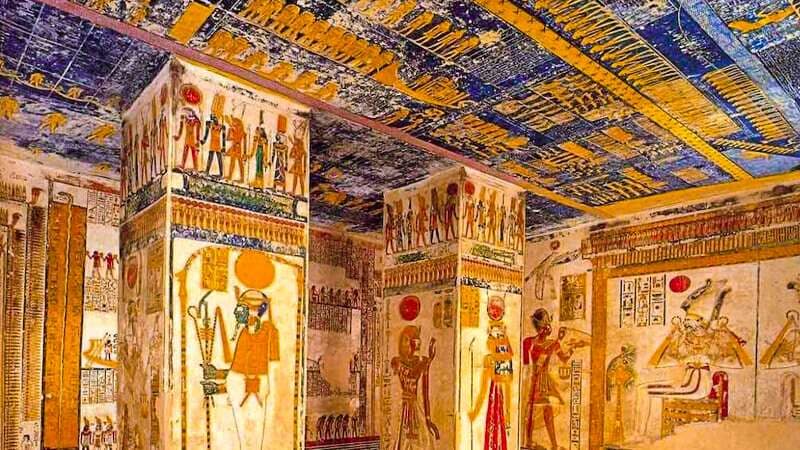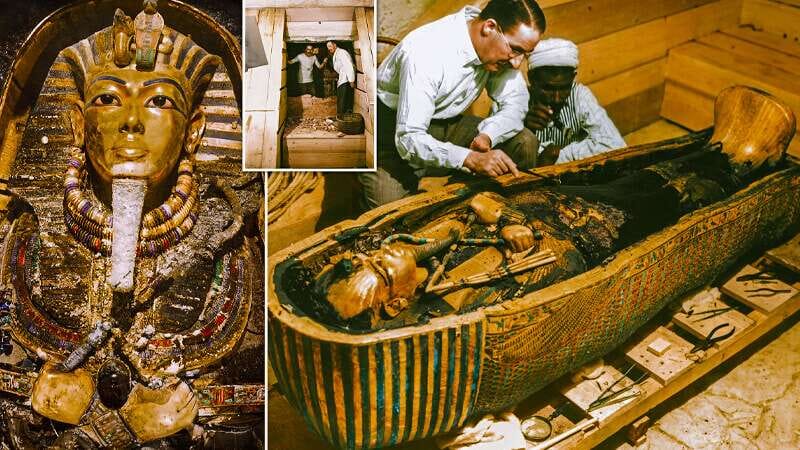Luxor Egypt is a special place for tourists, and good reason. It is often called the “world’s greatest open-air museum” because it has so many old ruins in good shape. The greatness of ancient Egyptian society can be seen in many places in the city.
Luxor is full of historical gems, like the fantastic Karnak Temple Complex and the fascinating Valley of the Kings. Each building and figure has an exciting story about pharaohs, gods, and old Egyptian rituals. Anyone who wants to learn more about the past should go to Luxor.
Thebes was the name of Luxor in the past. It was the capital of Egypt during the New Kingdom. It was the heart of faith and government, and pharaohs wanted to leave their mark on the land because of its beauty. The city grew and became a religious, art, and fashion center.
Luxor is a memory of how great things were back then. Ancient Egypt was very good at building and making art. The Valley of the Kings, the Temple of Hatshepsut, the Luxor Temple and Temple of Karnak, and the Temple of Hatshepsut all show this. Luxor is a UNESCO World Heritage site, which shows how important it is to remember the past.
When you go to Luxor’s beautiful sites, you’ll be amazed by the long-lasting hieroglyphics, tall figures, and beautiful buildings. Luxor isn’t just a place to visit; it’s also a journey into the heart of a great country. Get ready to learn much about Luxor’s history and way of life.
Exploring Luxor’s Ancient Temples and Monuments
A. The Temple of Karnak

The Temple of Karnak is a magnificent old Egyptian temple complex in Luxor, Egypt. It is one of the world’s most extensive and impressive places of worship. It was built over 2,000 years and was used as a place of prayer by many pharaohs. The temple is for Amun, but it is also a place of worship for other gods like Mut and Khonsu.
The Temple of Karnak is like going back in time when you walk through it. Its giant pylons, tall columns, and elaborately carved reliefs give it an impressive look. One of the best parts is the Hypostyle Hall, which has 134 tall columns that look like a forest. People say that the hall was made to look like the primordial swamp where the world began.
When you go to the Temple of Karnak, you can see how religious the old Egyptians were and how good they were at building. The size and scale of the complex are excellent, and they show how powerful and wealthy the pharaohs who had it built. The Temple of Karnak is a must-see in Luxor, whether you’re interested in history or love beautiful buildings.
B. Luxor Temple
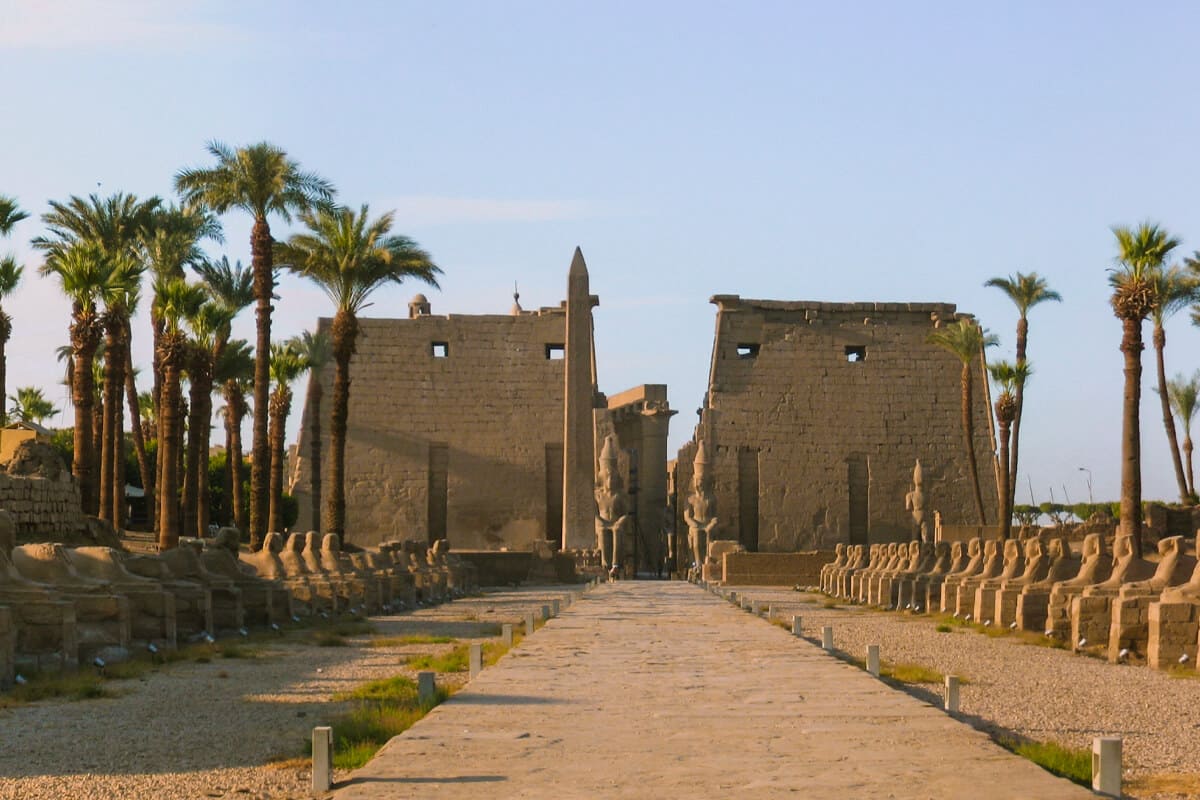
The Luxor Temple is a beautiful old temple complex on the east bank of the Nile River in Luxor, Egypt. It was built for the Theban Triad of gods: Amun, Mut, and Khonsu. During the time of the New Kingdom, when it was made, events and gatherings were held there. It is an excellent example of how grand old Egyptian building was and still stands today.
The entrance to Luxor Temple is marked by a colossal tower that used to have statues and paintings on it. As people walk through the temple, they see an oversized patio surrounded by tall columns, many of which still have their original bright paint. The grand shrine, where images of the gods used to be kept, is the most essential part of the whole structure.
Seeing Luxor Temple at night, when it is beautifully lit, is one of the most magical things you can do there. The temple takes on a ghostly glow that takes people back to the time of the pharaohs and their practices. It is a beautiful sight.
When you go to Luxor Temple, you can see how old Egyptians lived their religious and cultural lives. The size and beauty of the building, along with the detailed carvings and hieroglyphics, make it a must-see for anyone interested in old history and architecture.
C. The Valley of the Kings
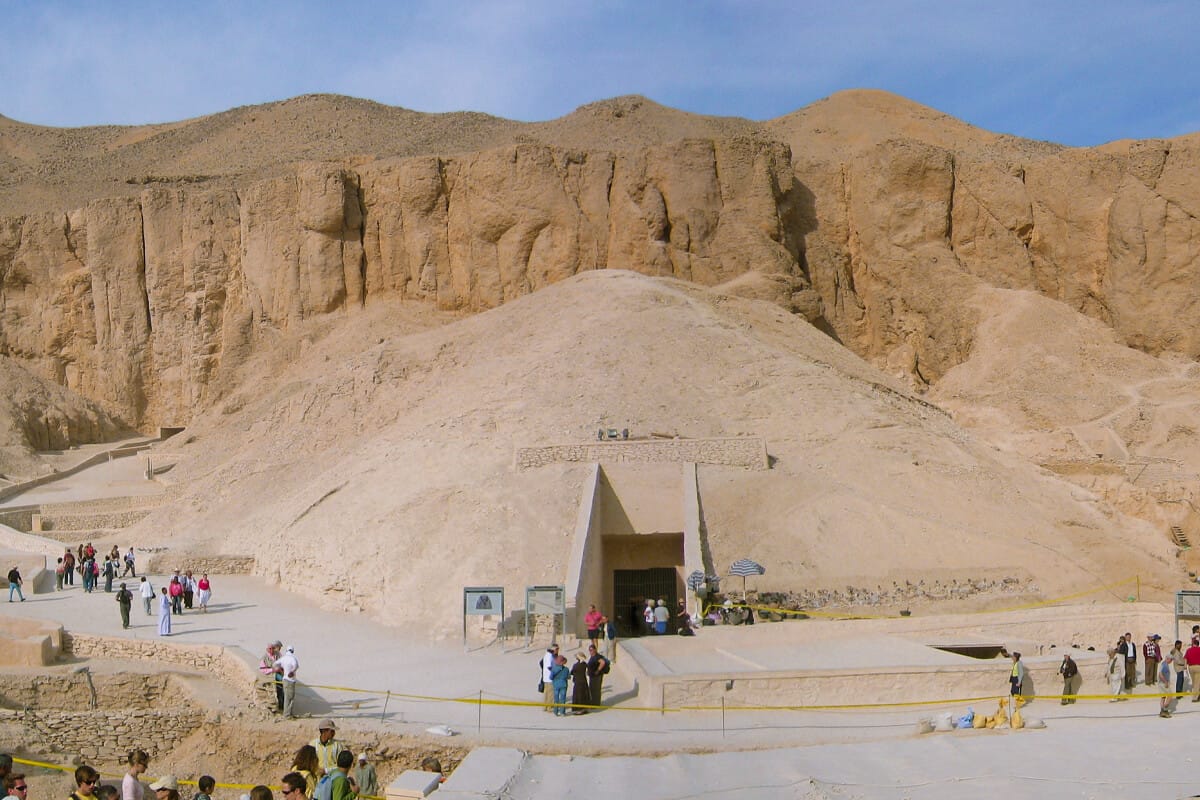
The Valley of the Kings is a beautiful historical site near Luxor, Egypt, on the west side of the Nile River. During the New Kingdom in ancient Egypt, pharaohs like Tutankhamun and Ramses II were buried there. Even though the place has a different name, it is a large cemetery with many tombs and rooms.
Exploring the Valley of the Kings is like going into an old world that has been kept secret for a long time. Deeply cut into the steep slopes, the tombs have complex hieroglyphics and colorful wall paintings that show scenes from the pharaohs’ lives and their journey to the afterlife. Howard Carter found the body of Tutankhamun in 1922, and it is the most well-known one.
Even though most of the treasures from the tombs are now in museums, the Valley of the Kings is still an exciting place to visit. When people walk through the halls and rooms of these ancient tombs, they get a strong sense of respect and belief in the future that the ancient Egyptians had. It shows how talented and skilled they are as artists and artisans.
D. The Colossi of Memnon
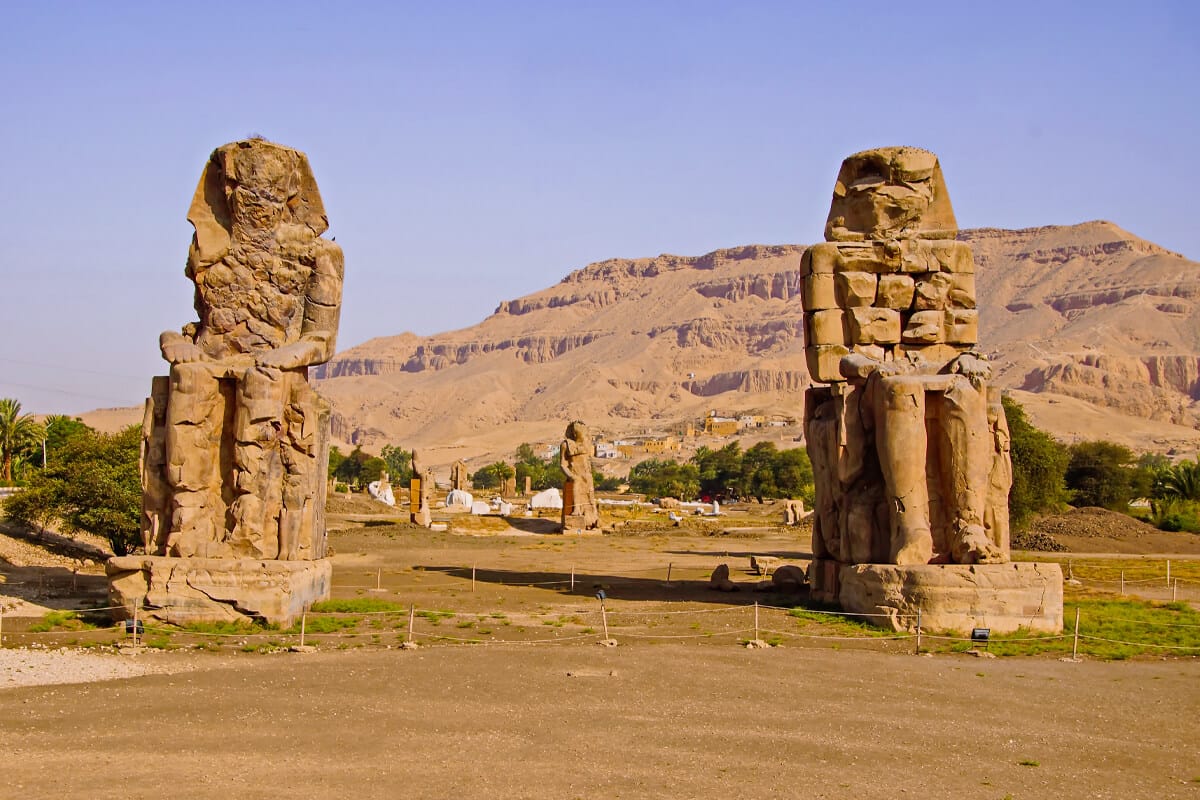
Colossi of Memnon are two huge figures on the west bank of the Nile River near Luxor, Egypt. These enormous figures of Pharaoh Amenhotep III were once part of a massive temple complex. Even though most of the building is in ruins, the statistics are still interesting.
The Colossi of Memnon are made of quartzite sandstone and stand about 18 meters tall. They are known for how big they are and how much detail they have. Even though time has worn away at the figures, you can still see some of the original colors used to paint them. Once, the figures stood at the door of Amenhotep III’s temple as guards and symbols of his heavenly power.
The Colossi of Memnon are giant statues with a strange story behind them. Ancient Greek visitors said that the spirit of Memnon, a hero from the Trojan War, made a beautiful sound from one of the figures at dawn. Even though natural things probably caused the sound, it added to the figures’ appeal and brought many people to see them over the years.
Today, the Colossi of Memnon stand as quiet sentinels, watching time go by and telling us of the once-powerful pharaohs who ruled over ancient Egypt. Tourists love to see them when they visit Luxor because of their striking appearance.
E. The Temple of Hatshepsut
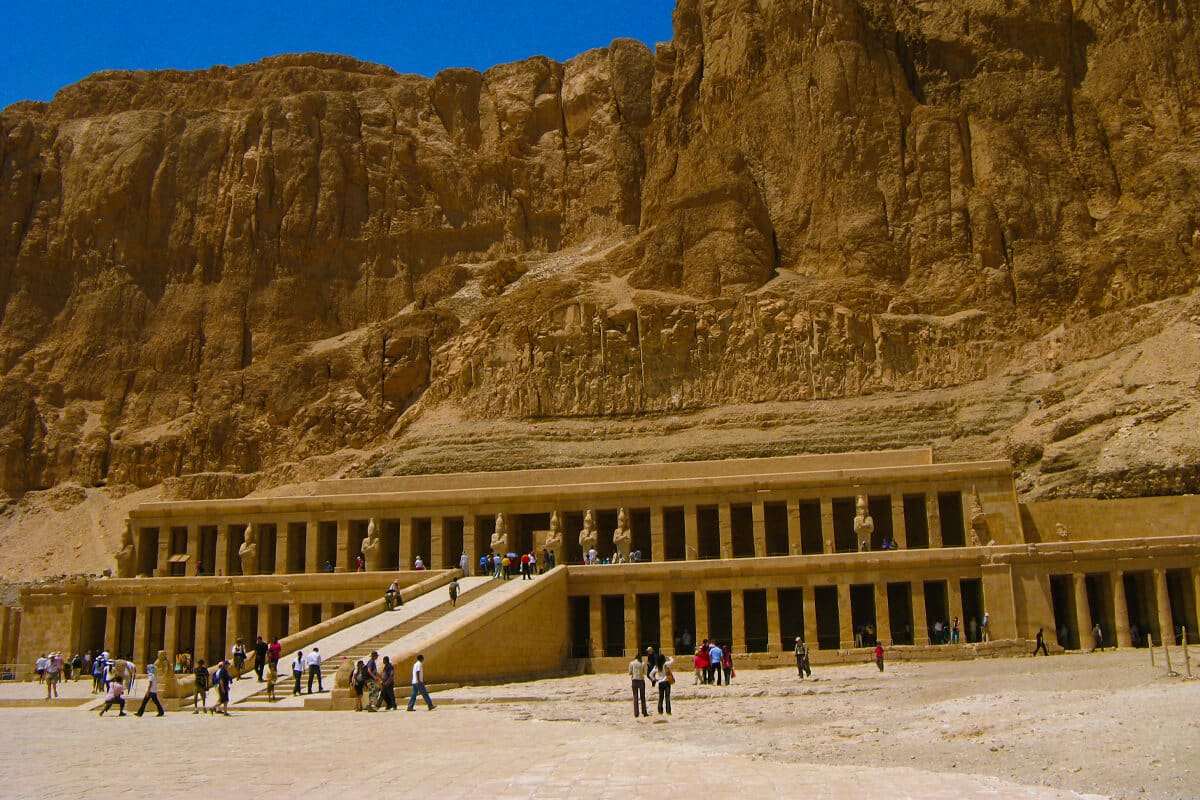
The Temple of Hatshepsut is a beautiful old Egyptian temple for Hatshepsut’s female ruler. It is on the west bank of the Nile River near Luxor, Egypt. During the time of the New Kingdom, this tomb temple was built. It is a reminder of one of Egypt’s most potent and essential kings.
The temple is surrounded by tall rocks, which give it a dramatic and impressive background. Its design is a unique mix of natural rock forms and artificial structures, with several steps linked by ramps and colonnades. The temple walls are covered with elaborate paintings and hieroglyphs showing Hatshepsut’s accomplishments and connection to the gods.
The Birth Colonnade, a large hall with columns, is one of the most exciting parts of the Temple of Hatshepsut. With its beautifully carved pillars and intricate reliefs, this fantastic building shows how talented the ancient Egyptians were as artists and builders.
When you go to the Temple of Hatshepsut, you can learn a lot about the life and deeds of a fascinating female ruler. The temple’s beautiful artwork and the way it fits in with its natural settings make it a must-see for history buffs and people interested in old Egyptian culture.
Activities to do in Luxor Egypt

A. Hot air balloon rides over the Valley of the Kings
Take a hot air balloon ride over the Valley of the Kings to see the fantastic beauty of Luxor from above. As the sun rises, drift gently through the morning sky, giving you a comprehensive view of the old grave grounds and the desert around them. It’s a once-in-a-lifetime chance to take beautiful pictures and make memories that will last a lifetime.
B. Nile River cruises
Take a relaxing cruise down the Nile River and sail along the waters that have given Egypt life and helped shape its past. You can enjoy the peaceful atmosphere by green riverbanks and pretty towns. Along the way, you’ll have the chance to visit old temples and ruins and learn more about Luxor’s rich cultural history. A Nile River tour is a beautiful way to see the beauty of Luxor, whether it’s a short trip at sunset or an adventure that lasts several days.
C. Camel rides
A camel ride in Luxor is a great way to feel the spirit of the desert. Get on the back of one of these friendly animals and ride through the sandy areas that circle the city. As you cross the hills and take in the vastness of the desert, let the camel’s steady rocking take you back in time. It’s a natural and unique way to learn about Luxor’s old customs and natural beauty.
D. Horse-drawn carriage tours
Take a slow ride through the streets of Luxor on a horse-drawn carriage and return in time. You can sit back and enjoy the ride while your trusty horse shows you the best parts of the city. You can visit Luxor’s beautiful buildings and local shops and enjoy the busy atmosphere. This old-fashioned way to get around adds a bit of charm to your trip and lets you take your time seeing the sights.
E. Shopping in the Luxor market
Go shopping at the lively Luxor bazaar, where you’ll find a treasure trove of local crafts, gifts, and traditional goods. The busy market has bright spices, detailed jewelry, hand-woven textiles, and unique interests. Take in the lively atmosphere as you try to get a good deal and talk to friendly sellers. Whether you want souvenirs to remind you of your trip or authentic Egyptian goods, the Luxor market is a shopper’s dream waiting to be discovered.
Tips for Visiting Luxor Egypt
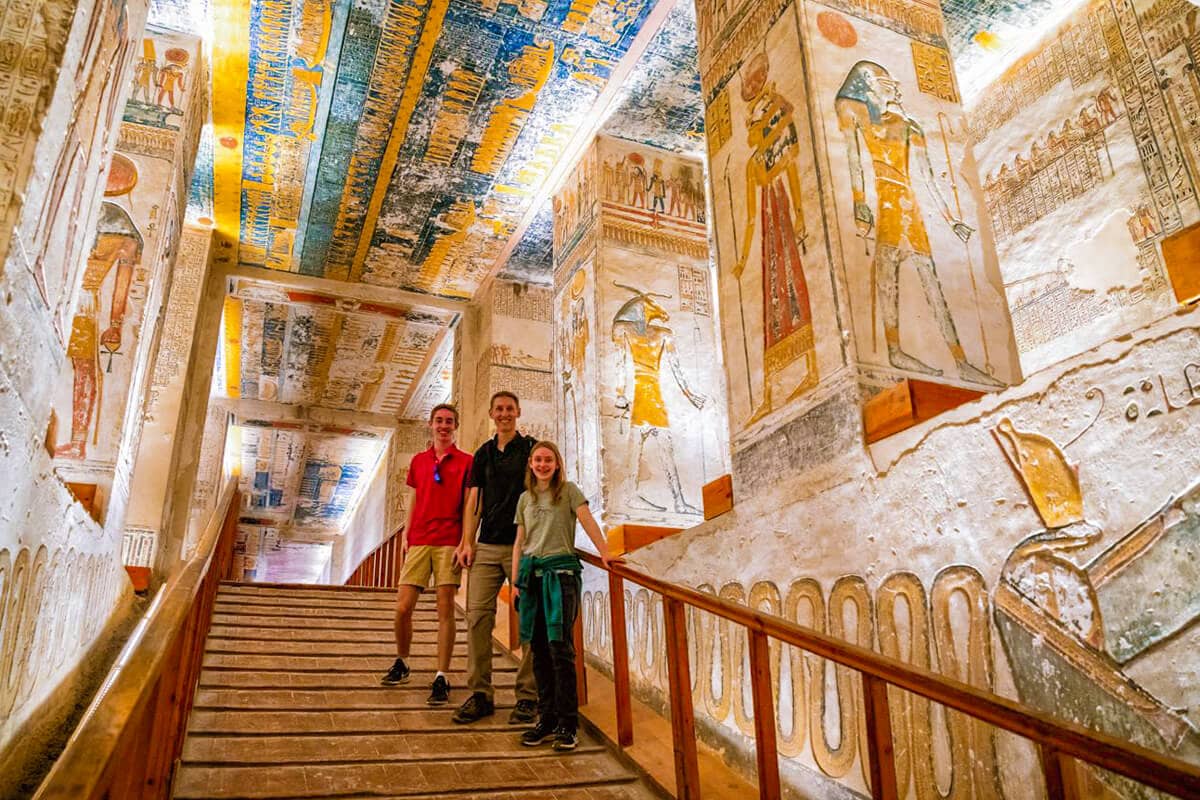
A. Best time to go:
The best time to visit Luxor is from November to February when the weather is excellent and the temperatures are mild. You should stay away during the hot summer months when temperatures get very high.
B. Dress code:
It’s essential to dress modestly at Luxor’s temples and holy places. Both men and women should cover their shoulders and knees. To deal with the heat, you should wear clothes made of natural materials that are light and airy. Remember to protect yourself from the sun by bringing a hat, sunglasses, and sunscreen.
C. Safety tips:
Luxor is usually a safe place to visit, but being careful is always a good idea. Don’t walk alone at night in deserted areas, and watch your things in busy places. It’s best to use reliable transportation services and only hire tour guides with licenses. Keep drinking water and a bottle with you, especially when it’s hot outside.
D. Cultural etiquette:
When visiting Luxor, you must respect the local norms and habits. Don’t take pictures of local people, especially women, without asking first. People should be greeted with “hello” or “salam” and aware of regional norms. When you go to holy sites, be quiet and polite because these are places where many Egyptians pray.
By remembering these tips, you can make sure your trip to Luxor is pleasant and polite while you enjoy its rich history, culture, and beauty.
Conclusion
There are a lot of good reasons to go to Luxor. First and foremost, Luxor is home to vast history and building from old Egypt. People often call it the world’s biggest open-air museum because it lets you see the wonders of a society that was at its peak thousands of years ago. Attractions in Luxor, like the Valley of the Kings and the Temple of Karnak, give tourists a unique look into the past and leave them in awe of their grandeur. This exciting place is also made more appealing by the calm Nile River and the surrounding deserts.
Luxor is a fascinating city that takes you on a trip through ancient Egyptian history you will never forget. Luxor has something for everyone interested in history and design or who wants a unique cultural experience. Plan your trip for the cooler months to enjoy the nice weather. When you go to a holy place, respect the local practices and dress modestly. Take the safety steps you need to and watch out for your things. Don’t pass up the chance to eat the local food and enjoy the lively atmosphere of the Luxor market. Last but not least, take the time to enjoy the beauty and wonder that Luxor has to offer and make memories that will last a lifetime.
Planning a tour to Egypt? Stop looking! You can book your dream Egypt vacation packages, a magical Nile cruise in Egypt, or a memorable Egypt day tour. There’s an excellent plan for everyone, whether you’re interested in old history, want to see famous sites like the Pyramids of Giza or the Temple of Luxor, or want to sail down the Nile. Experience the wonders of Egypt’s rich history with the help of professional tour guides with Tour2Egypt, who will ensure you have a smooth and memorable trip. From the busy streets of Cairo to the quiet temples of Aswan, every moment will be full of wonder and discovery. Take the chance to learn about Egypt’s secrets. Book your trip to Egypt today and get ready for the journey of a lifetime.


